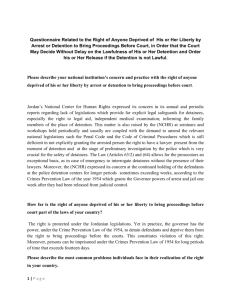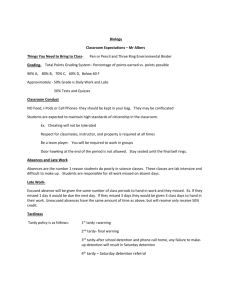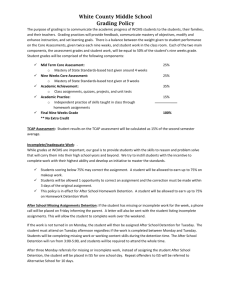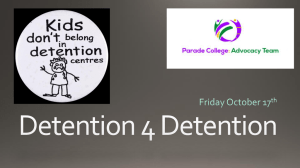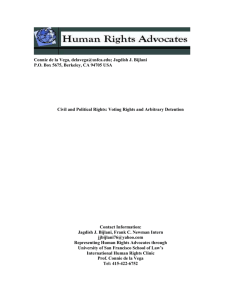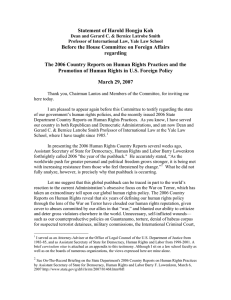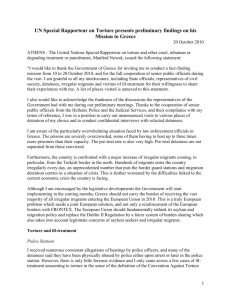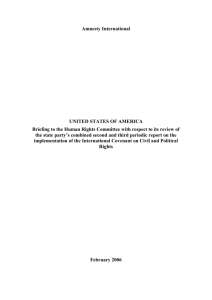Joint Written Statement to the U.S. State Department by The John
advertisement
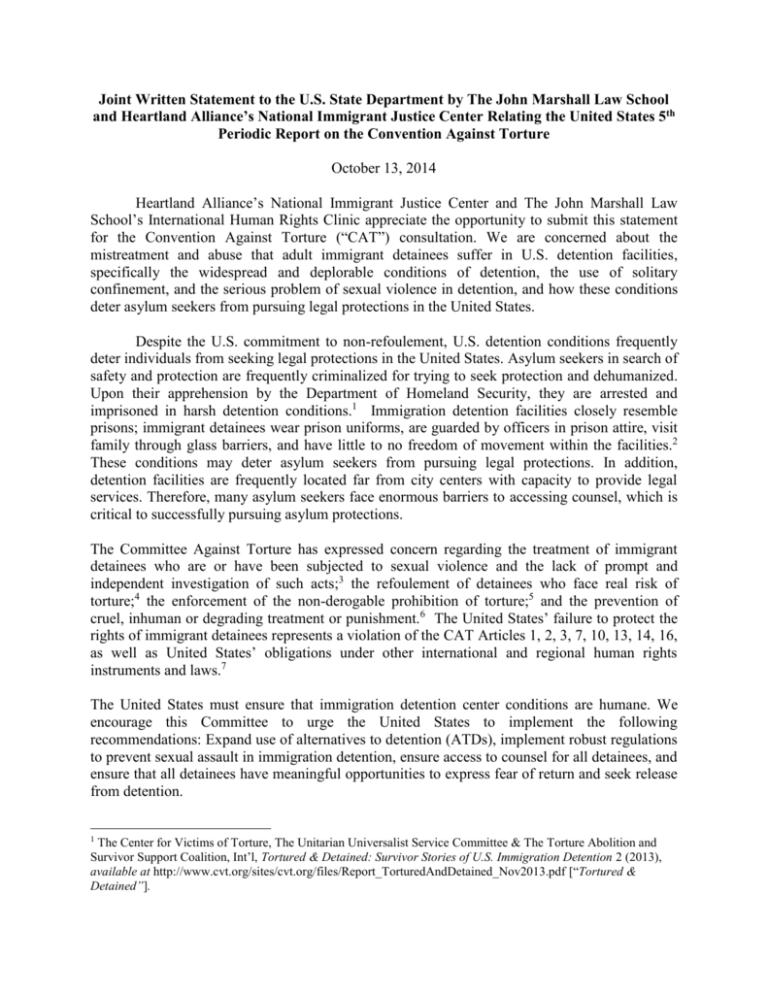
Joint Written Statement to the U.S. State Department by The John Marshall Law School and Heartland Alliance’s National Immigrant Justice Center Relating the United States 5th Periodic Report on the Convention Against Torture October 13, 2014 Heartland Alliance’s National Immigrant Justice Center and The John Marshall Law School’s International Human Rights Clinic appreciate the opportunity to submit this statement for the Convention Against Torture (“CAT”) consultation. We are concerned about the mistreatment and abuse that adult immigrant detainees suffer in U.S. detention facilities, specifically the widespread and deplorable conditions of detention, the use of solitary confinement, and the serious problem of sexual violence in detention, and how these conditions deter asylum seekers from pursuing legal protections in the United States. Despite the U.S. commitment to non-refoulement, U.S. detention conditions frequently deter individuals from seeking legal protections in the United States. Asylum seekers in search of safety and protection are frequently criminalized for trying to seek protection and dehumanized. Upon their apprehension by the Department of Homeland Security, they are arrested and imprisoned in harsh detention conditions.1 Immigration detention facilities closely resemble prisons; immigrant detainees wear prison uniforms, are guarded by officers in prison attire, visit family through glass barriers, and have little to no freedom of movement within the facilities.2 These conditions may deter asylum seekers from pursuing legal protections. In addition, detention facilities are frequently located far from city centers with capacity to provide legal services. Therefore, many asylum seekers face enormous barriers to accessing counsel, which is critical to successfully pursuing asylum protections. The Committee Against Torture has expressed concern regarding the treatment of immigrant detainees who are or have been subjected to sexual violence and the lack of prompt and independent investigation of such acts;3 the refoulement of detainees who face real risk of torture;4 the enforcement of the non-derogable prohibition of torture;5 and the prevention of cruel, inhuman or degrading treatment or punishment.6 The United States’ failure to protect the rights of immigrant detainees represents a violation of the CAT Articles 1, 2, 3, 7, 10, 13, 14, 16, as well as United States’ obligations under other international and regional human rights instruments and laws.7 The United States must ensure that immigration detention center conditions are humane. We encourage this Committee to urge the United States to implement the following recommendations: Expand use of alternatives to detention (ATDs), implement robust regulations to prevent sexual assault in immigration detention, ensure access to counsel for all detainees, and ensure that all detainees have meaningful opportunities to express fear of return and seek release from detention. 1 The Center for Victims of Torture, The Unitarian Universalist Service Committee & The Torture Abolition and Survivor Support Coalition, Int’l, Tortured & Detained: Survivor Stories of U.S. Immigration Detention 2 (2013), available at http://www.cvt.org/sites/cvt.org/files/Report_TorturedAndDetained_Nov2013.pdf [“Tortured & Detained”]. 2 Human Rights First, U.S. Detention of Asylum Seekers: Seeking Protection, Finding Prison 1 (2009), http://www.humanrightsfirst.org/wp-content/uploads/pdf/090429-RP-hrf-asylum-detention-report.pdf [“Human Rights First”]. 3 Comm. Against Torture, U.N. Committee Against Torture: Conclusions and Recommendations, United States of America, ¶ 32, U.N. Doc. CAT/C/USA/CO/2 (July 25, 2006), available at http://tbinternet.ohchr.org/_layouts/treatybodyexternal/Download.aspx?symbolno=CAT%2fC%2fUSA%2fCO%2f2 &Lang=en [“Conclusions & Recommendations”]. 4 Id. at ¶ 20. 5 Id. at ¶ 23. 6 Id. 7 Other relevant international instruments and laws include but are not limited to: Optional Protocol to the International Covenant on Civil and Political Rights, Dec. 16, 1966, 999 U.N.T.S. 302; Second Optional Protocol to the International Covenant on Civil and Political Rights, Aiming at the Abolition of the Death Penalty, G.A. Res. 128, U.N. GAOR 44 Sess., Supp. No. 49 at 207, U.N. Doc. A/44/824 (Dec. 15, 1989); International Covenant on Economic, Social, and Cultural Rights, Dec. 16, 1966, 993 U.N.T.S. 3; Optional Protocol to the International Covenant on Economic Social and Cultural Rights, G.A. Res. 63/117, U.N. Doc. A/Res/63/117 (Dec. 10, 2008); International Convention on the Protection of the Rights of All Migrant Workers and Members of Their Families G.A. Res. 45/158, U.N. GAOR, 45th Sess., Supp. No. 49A, U.N. Doc. A/45/49 (1990); Convention Relating to the Status of Refugees, July 28, 1951, 189 U.N.T.S. 150; Protocol Relating to the Status of Refugees, Oct. 4, 1967, 606 U.N.T.S. 267; Basic Principles for the Treatment of Prisoners, G.A. res. 45/111, annex, 45 U.N. GAOR Supp. (No. 49A) at 200, U.N. Doc. A/45/49 (1990);Body of Principles for the Protection of All Persons under Any Form of Detention or Imprisonment, G.A. res. 43/173, annex, 43 U.N. GAOR Supp. (No. 49) at 298, U.N. Doc. A/43/49 (1988); International Convention on the Protection of the Rights of All Migrant Workers and Members of Their Families, G.A. res. 45/158, annex, 45 U.N. GAOR Supp. (No. 49A) at 262, U.N. Doc. A/45/49 (1990), entered into force July 1, 2003.
